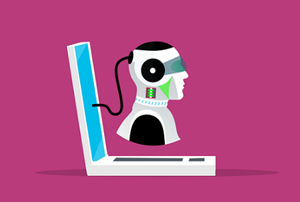All You Need to Know About Synthetic Intelligence in Urdu & English Languages, Key Benefits, Uses & Future of SI, Comparison of SI with AI, DL & ML
We know, you’ve heard it all before. Artificial Intelligence (AI), Machine Learning (ML), Deep Learning (DL) and now – Synthetic Intelligence (SI). However, as technology continues to advance and we’re able to apply more data than ever to our daily activities, the industry is beginning to understand the limitations of these learnings. In this article of studysolutions.pk, we are going to discuss all the aspects of synthetic intelligence both in Urdu and English languages
It’s all in the name. AI, ML and DL are all intelligence created by humans using data and algorithms – obviously ‘artificial’. SI on the other hand is a new approach based upon a combination of AI, ML and DL but with a twist – instead of training algorithms to recognize patterns in data, SI learns from human behavior – it learns from real experiences. The difference between AI, ML and DL is that whilst AI focuses on learning from one set of experiences in order to make predictions about future events, ML leverages several sets of experiences to predict outcomes.

This allows for greater flexibility in what can be achieved. For example, if you were designing an algorithm around an input message, this would have a single set of responses which could be trained through AI, however through using ML you can train multiple sets of responses which allows for greater personalization and levels of enjoyment during the interaction.
Difference Between Artificial Intelligence, Machine Learning, Deep Learning and Synthetic Intelligence?
When most people think of artificial intelligence (AI) they think of AI in Hollywood such as the voice of Siri in the iPhone or the voice of Alexa in the Amazon Echo. However artificial intelligence is a broader field than many realize. There are different types of AI each with their own advantages and weakness. In this blog post we will explain the difference between 4 types of AI: Artificial Intelligence, Machine Learning, Deep Learning and Synthetic Intelligence.
What is Artificial Intelligence?
Artificial intelligence is an umbrella term covering all types of artificial intelligence. It refers to the ability of a computer program to perform tasks that typically require human intelligence such as understanding natural language and recognizing faces.
Robotics & Artificial Intelligence Career, Scope, Jobs, Subjects & Definition
What is Machine Learning?
Machine learning is a sub-field of artificial intelligence that focuses on enabling computer programs to learn from data without being explicitly programmed. For example computer programs that can identify birds in photos are using machine learning.
What is Deep Learning?
Deep learning is a sub field of machine learning that deals with learning representations of data. In deep learning computer programs learn to represent data in a way that is easy for programs to learn. For example a deep learning program might learn to represent data in a method that it is easy to identify animals in photos.
What is Synthetic Intelligence?
Synthetic intelligence is a sub-field of artificial intelligence that focuses on creating computer programs that can think and act like human beings. Synthetic intelligence is still in its early stages and there are no programs that can truly function like humans. However there are programs that perform human-like tasks Like chatting or playing games.

Benefits of Synthetic Intelligence
Synthetic intelligence has the ability to do wonders for us. It is going to bring revolution in our life as it can process large amounts of data quickly and accurately without any mistake. This can be used to make right decisions, identify patterns & trends, and provide predictions. AI can also help human beings by taking on repetitive and dangerous tasks, such as exploring new environments or defusing bombs. Additionally, synthetic intelligence can help us in making better decisions by providing unbiased recommendations to us. Here are some more potential uses of SI;

What is Synthetic Intelligence? SI Benefits, Uses, Future (Urdu-English)
1-SI can improve accuracy and efficiency.
2-Synthetic intelligence will reduce the costs.
3-It will help us in faster decision making.
4-SI will increased the productivity.
5-Synthetic intelligence will be used for fraud detection.
6-SI will be used in the fields of autonomous vehicles, predictive maintenance and supply chain management. The potential benefits of SI are really vast. In the future, SI and AI could help us make our cities smarter, our healthcare better, and our customer service more efficient.
Why Synthetic Intelligence is more Sophisticated than other types of Artificial Intelligence?
When most people think about artificial intelligence or AI, they think about robots like we see in the hollywood movies. However in reality, the artificial intelligence is much more than that. There are many kinds of AI, each of the has its own pros and cons. Synthetic intelligence or SI is one type of AI that is more sophisticated than the others. Now we are going to discuss that why synthetic Intelligence is more sophisticated than other types of artificial intelligence.
Synthetic intelligence is a sub field of artificial intelligence that focuses on creating intelligent machines which are able to think and act like real human beings. SI is different from other types of artificial intelligence as it is involved in creating systems, that are capable of human-like thought. This means that SI is able to solve complex problems in ways that are very much similar to how humans would solve them.
One of the main reasons why SI is more sophisticated than other types of AI is because it is based on the latest research in cognitive science. This research has shown that the human brain is much more complex than the previous research. As a result, SI systems are able to replicate some of the key features of the human brain that make it so powerful.
The second reason why synthetic intelligence is more advanced than other types of AI is because it uses a variety of AI techniques. These techniques include machine learning, natural language processing, and reasoning. By using a combination of these techniques, SI systems are able to solve problems in ways that are similar to humans.
Lastly, SI is more sophisticated than other types of AI, because it is constantly improving. As new research is conducted and new technologies are developed, SI systems is becoming more powerful. This means that SI will continue to get better over time, making it more advanced than other kinds of AI.
So, why is synthetic intelligence is more sophisticated than other types of AI? There are 3 main reasons for it: SI is in fact based on the latest research in cognitive science, it uses a variety of artificial intelligence techniques, and it is rapidly improving.
Future of Synthetic Intelligence
The future of synthetic intelligence or SI is full of potential, but also uncertain at the same time. But while there are many unknowns about SI, experts increasingly agree that the technology will have profound implications for human beings and the world we live in.
Over the next few years synthetic intelligence is expected to penetrate more and more into our lives and change the way we work and interact with each other. As SI becomes smarter and more complex it will enable us to do things that are currently looking impossible or impractical.
Like synthetic intelligence can help us address some of the world’s most pressing problems for example climate change, energy insecurity and healthcare. It will also allow us to create new products and services that are at present unimaginable.
The potential applications of synthetic intelligence are almost limitless. But like any new technology SI comes with risks and challenges. For example SI can be used to create powerful new weapons or to manipulate and control people. One of the main fears is synthetic intelligence will lead to job losses, as machines will be able to perform many of the tasks, currently performed by human beings. There are also some serious concerns that synthetic intelligence could be used to control or manipulate humans as the technology develops and becomes more sophisticated.
As we move into the future it is important to understand the potential benefits and risks of synthetic intelligence. Only by doing so can we ensure that this transformative technology is used for the benefit of all humanity. Do visit studysolutions.pk daily and now read the Urdu article on SI:
Ultimate Guide on Disadvantages of AI Article Writer Tools

